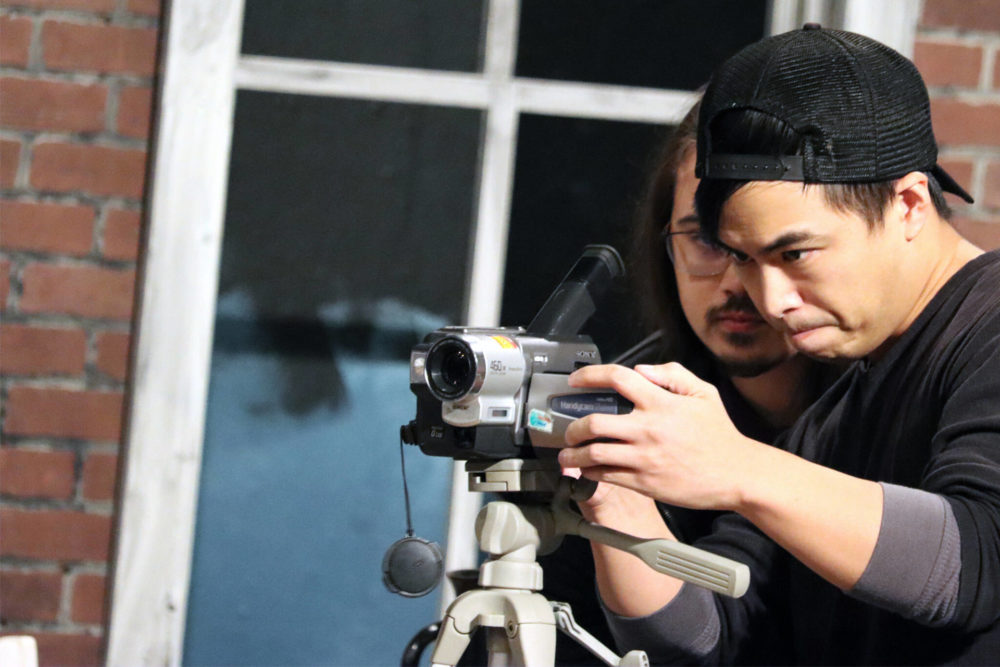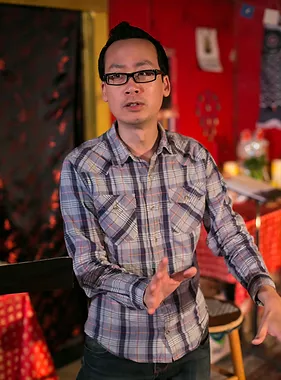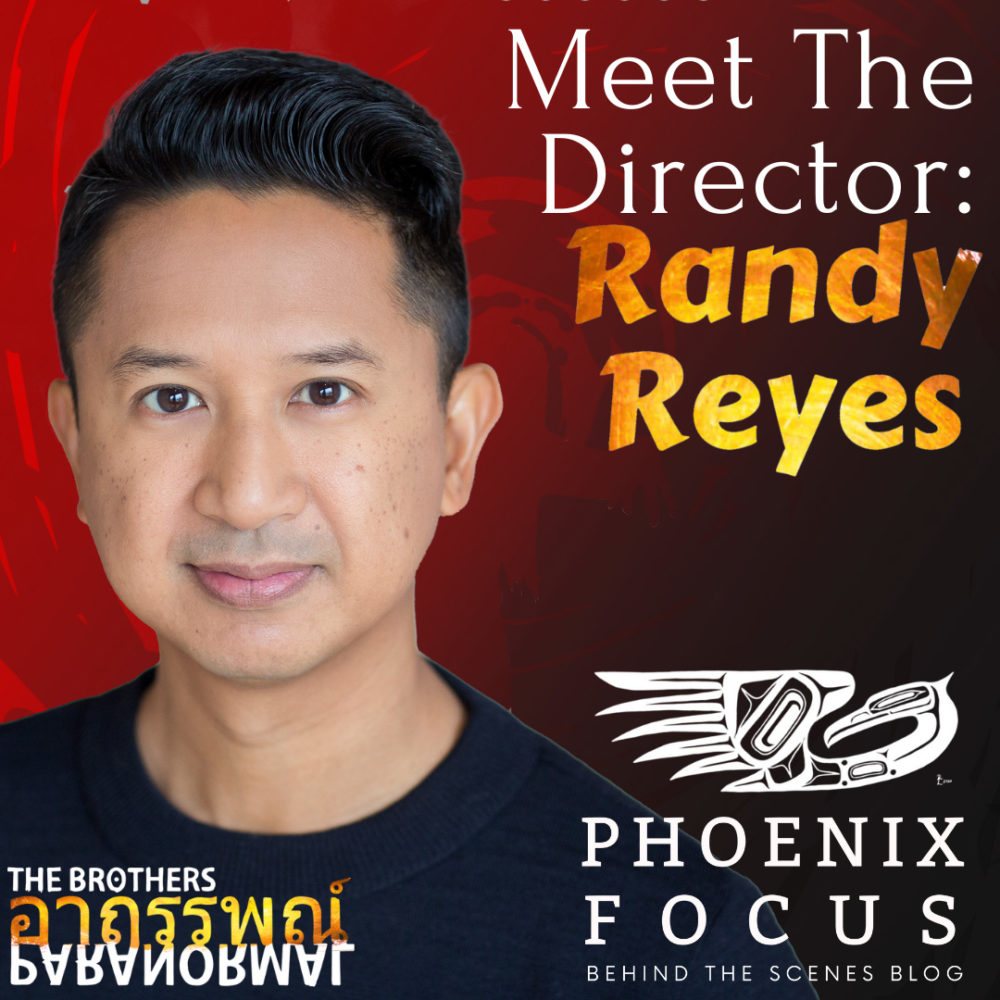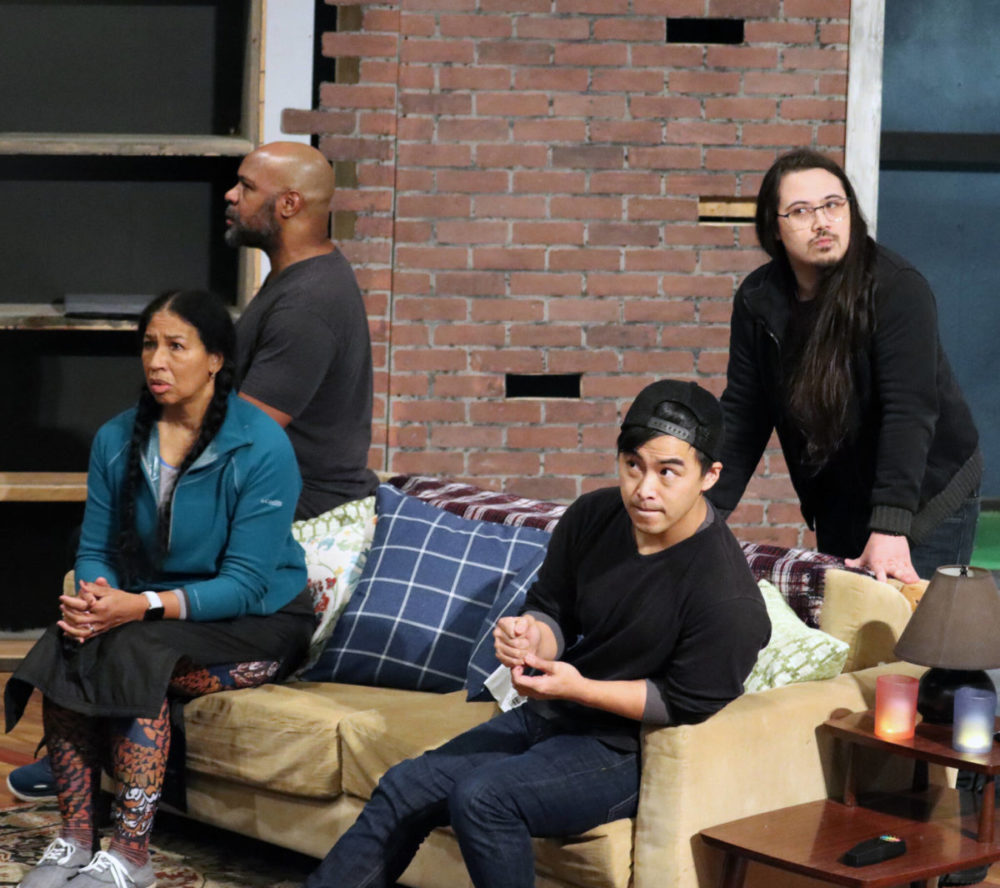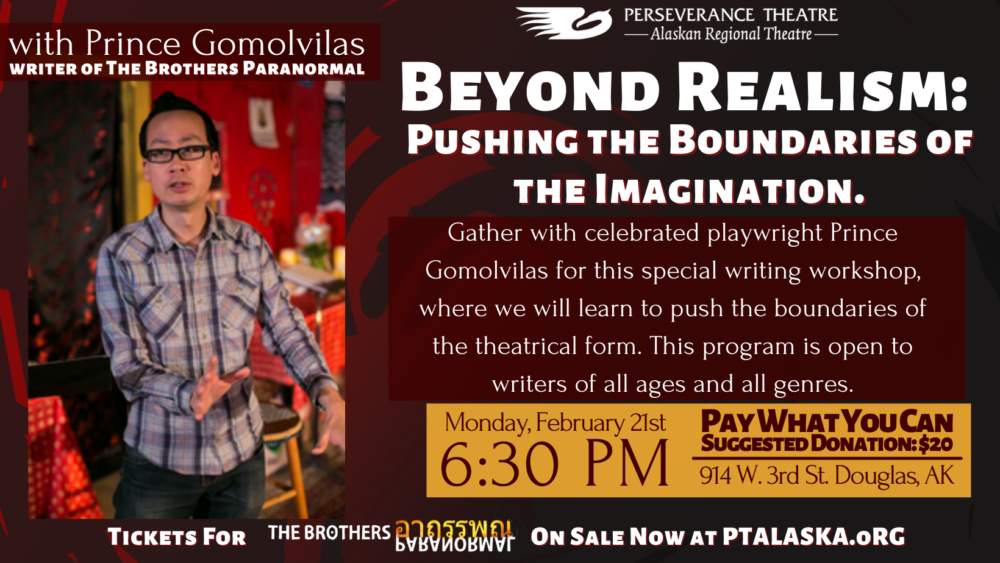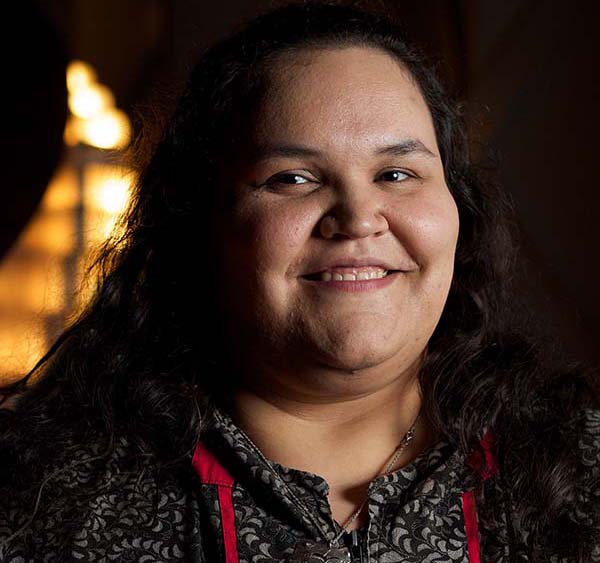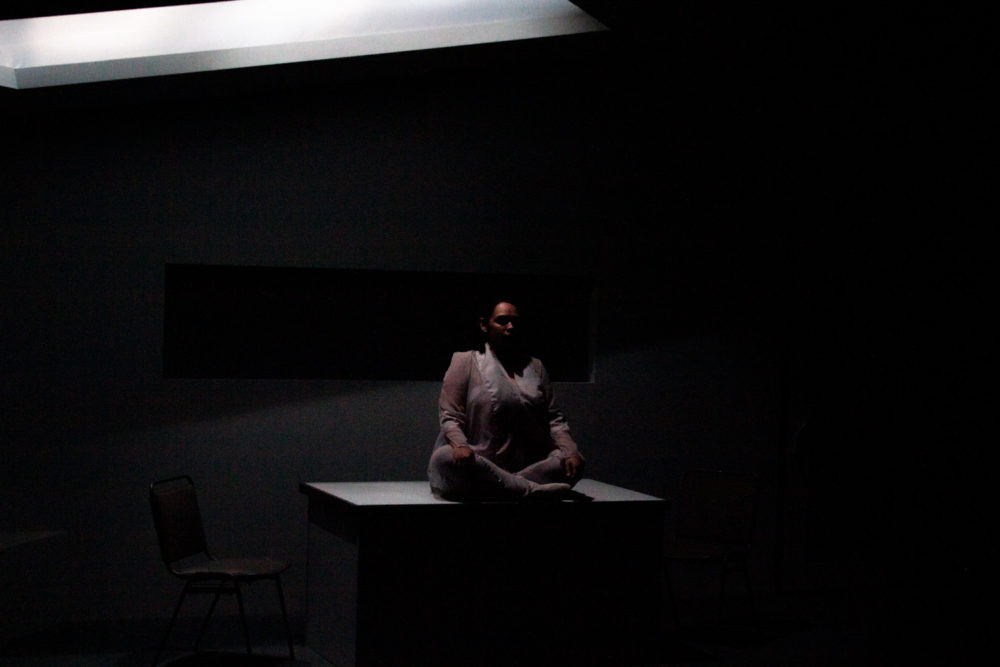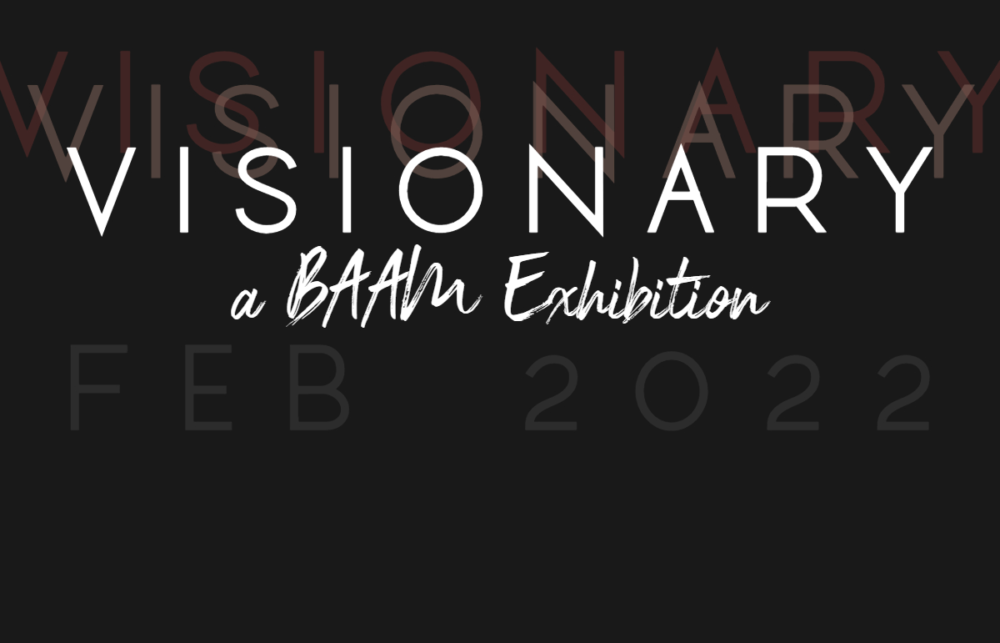My name is Jared Olin. I am Tl’eeyegge Hʉt’aane, and I’ve come to Perseverance Theatre (PT) as this year’s Artistic Apprentice. When asked about what I’d like to focus on throughout the year, I responded with acting, directing, and writing. I’ve come to work on and learn so much about all three of these focus areas, but acting was my first significant assignment from the theatre in my role as Carl/Ceygan in Jared Michael Delaney’s Voyager One. It’s been so exciting to step back onto the stage of an in-person theatre again, but COVID has certainly made the past couple of years a challenge.
The entire world has been tilted by the weight of COVID-19, and theatre has certainly not been exempt from that in these past two years. My experience under this pressure may sound very familiar to other performers in this industry. To share my personal path down this road, we have to go back to the beginning.
Bang….
Oh, sorry. Not that far back.
So it’s March 2020, and I’m in our final rehearsals of Pride and Prejudice for the University of Alaska Fairbanks’ (UAF) production where I’m playing Mr. Bingley/Mary Bennet. Things are ramping up with our dance choreography, the technical team is prepping to fine-tune the show, and we’re just about set to present it to the world. The next thing we know, quarantine comes in like a wrecking ball and we’re forced to cancel the show. After such hard work and so many hours, this unexpected cancellation hit pretty hard… It’s something that COVID took away from our whole team, because we never got the chance to present the show as originally intended.
A year later, we were finally able to present the show, but it took a different form. Our version of Pride and Prejudice was converted into a virtual production with some significant changes. The largest hurdle to get over as an actor was to realize that I couldn’t rely so much on physical movements for comedy or other emotional beats like I would in a regular theatrical production. Our acting had to be condensed into the frame of our laptop cameras, and our performances transformed to be more understated as we utilized film acting techniques. It did allow for some of the more intimate moments to shine brighter, but it was very hard not to yearn for the beautiful orchestration that was present in the original performance. Still, it was lovely to see how our team persevered by returning to this show and finishing it.
The first show I worked on during the pandemic was She Kills Monsters: Virtual Realms with UAF, in which I played Miles. This was in November of 2020, and was my introduction to creating virtual theatre. This is where I’d learn about just how many technical things could go wrong in a virtual production. There were a lot of technical factors to keep track of before our takes, so it turned out that the actors had to also become camera operators by-proxy. We all got the hang of it by the end, but there were plenty of mistakes made before we got to that point.
Titus Andronicus was my next theatrical venture with PT in February 2021, and was my first experience of a live virtual reading. I enjoyed the live format because it felt a little closer to in-person theatre shows. Performing this show live also left us open to hosting a Q&A afterwards which allowed for great discussions of the piece.
Also in February of 2021, I performed in a radio play performance of As You Like It with Fairbanks Shakespeare Theatre (FST). This too, was a welcome change of form as I was able to perform with just my voice. For this production, I was faced with a challenge I never expected. My neighbors. They were just walking around upstairs, but it sure sounded like stomping to the sensitive microphone and I. Waiting for the moments in between their walking around was enough to fix that disruption.
The next show I worked on was The Winter Bear in May 2021, a play based on a part of my great grandfather’s life. This was a virtual production as well, and remains close to my heart, as this was my first time acting in a show where the entire cast was Alaska Native or Native American. The new element added to this show, at least to me, was the use of a green screen. It suggested the idea that the actors were actually outside in the cold or in the old cabin settings within the play. While I haven’t worked with a green screen in the past, it was very easy to get used to. I’d pick a point in my apartment to look at (as if I was looking at the other actor), and perform the scene to that focal point. A con to that, was the fact that I couldn’t look at my acting partner during those scenes, which sometimes helps with reactions, but I adjusted quickly to the new circumstance. I’m very happy with all the work that we put in for this show.
August 2021 was when I made it back on the main stage with FST’s production of Twelfth Night. Still in the midst of rising and falling cases, we had to continue precariously. We kept up with UAF’s COVID action plans and were sure to adjust our plans for seating audience members when the show opened. They don’t have locked-in-place chairs, so we were able to physically distance multiple sections of the seating area by placing the chairs further apart. Our nerves about the pandemic had been building for a year and half at this point, but a slight alleviation to that stress was the fact that we held this performance in an outdoor playing space.
This is where Voyager One comes in. Back in November 2021, I was able to perform in Perseverance’s production, and I’m proud of how it turned out. That was also in large part because of how safe it felt. PT had many safety precautions to keep us and visitors safe. At the door, we were met with a COVID safety officer to check our temperature and ask us if we felt any related symptoms. Once we passed that check, we could step into the Voyager One rehearsal room as long as we kept our masks on the entire time. It made the whole process feel very safe, and as we progressed further into production, we also shifted our safety calls. During the performance, there was a 1-foot square where we couldn’t step or risk being within 10 feet of an audience member without our mask on. To work around that, we literally did just that. We blocked our movements around that square and made sure not to step there during the run. These are little things that built up to make the atmosphere of performing for Perseverance Theatre feel as safe as possible.
Acting has been a tricky thing to maintain through the pandemic, with in-person theatres shutting down left and right. It seems that the world is building confidence to open these venues back up, but I believe that virtual theatre work will continue. While I am excited to keep journeying back into physical theatre spaces, I am also very prepared to keep looking for roles in more radio and virtual productions. This is especially true if it means that I can keep my family and other families in the community safe. Enaa baasee’. (Thank you very much.)


